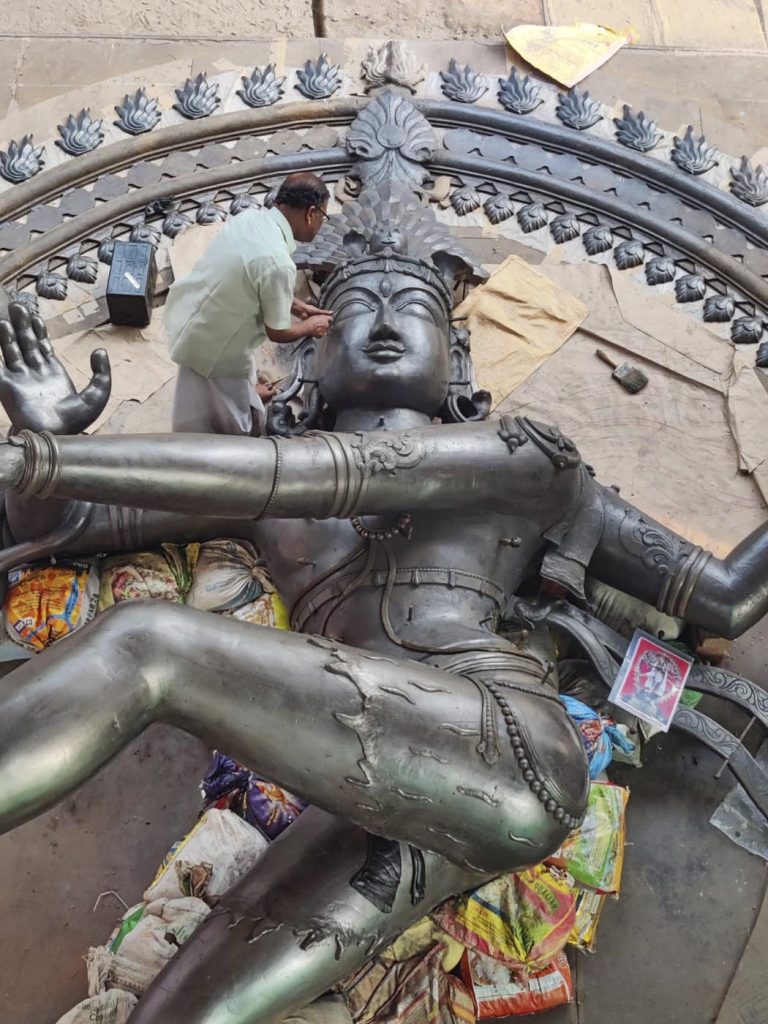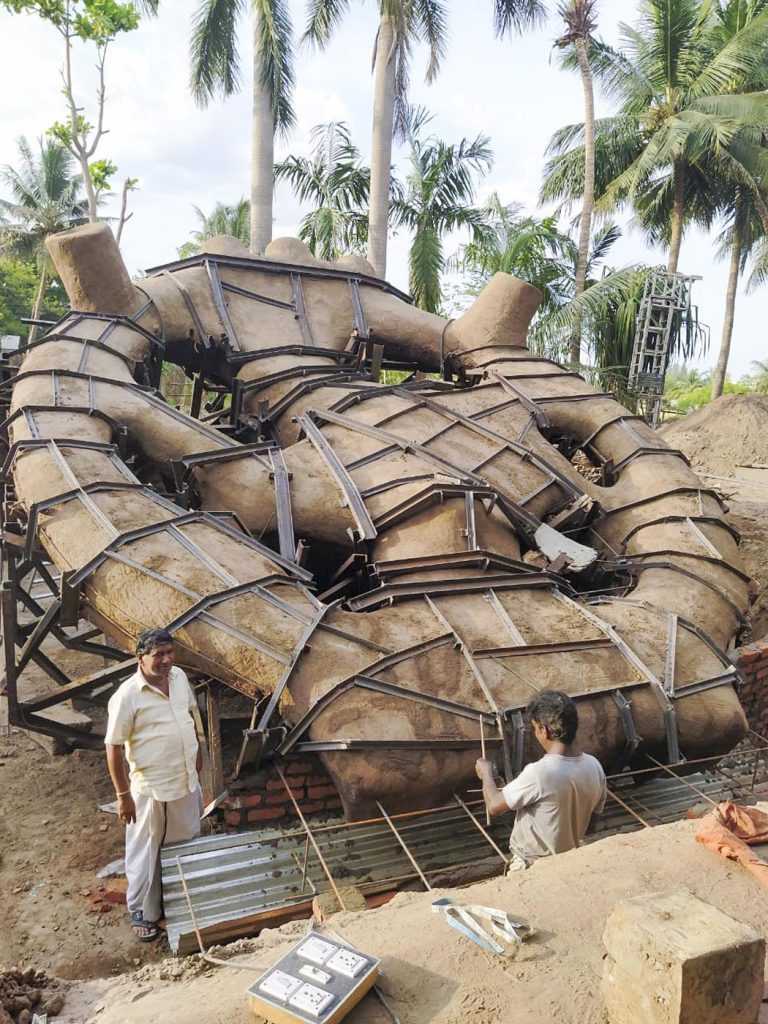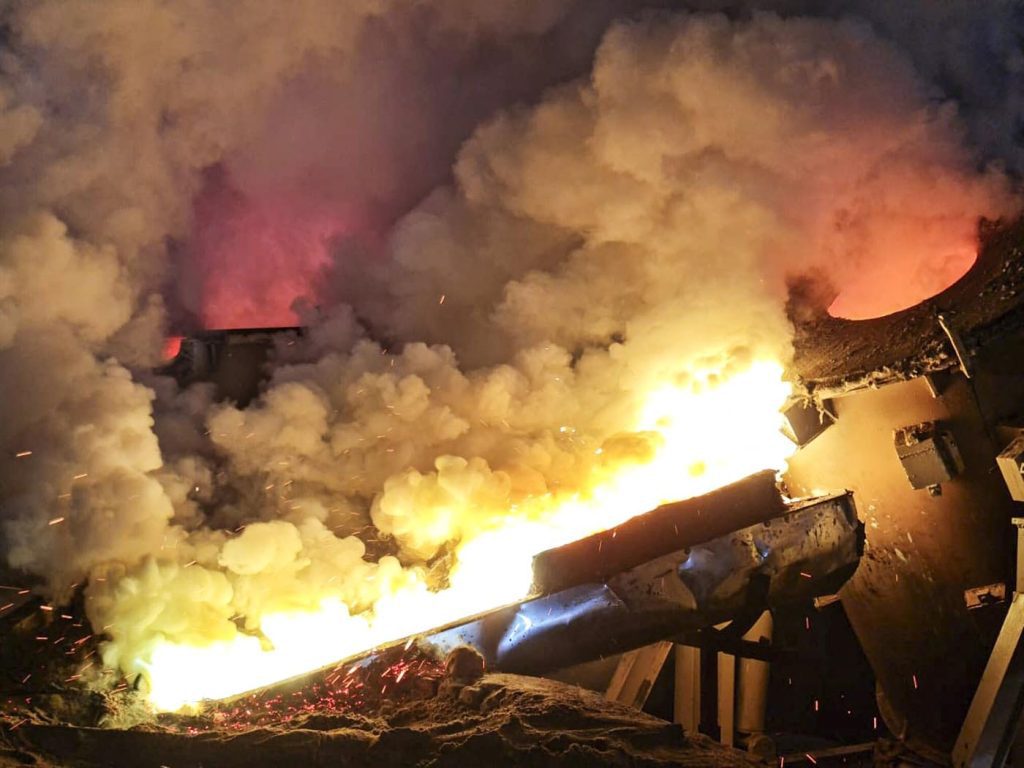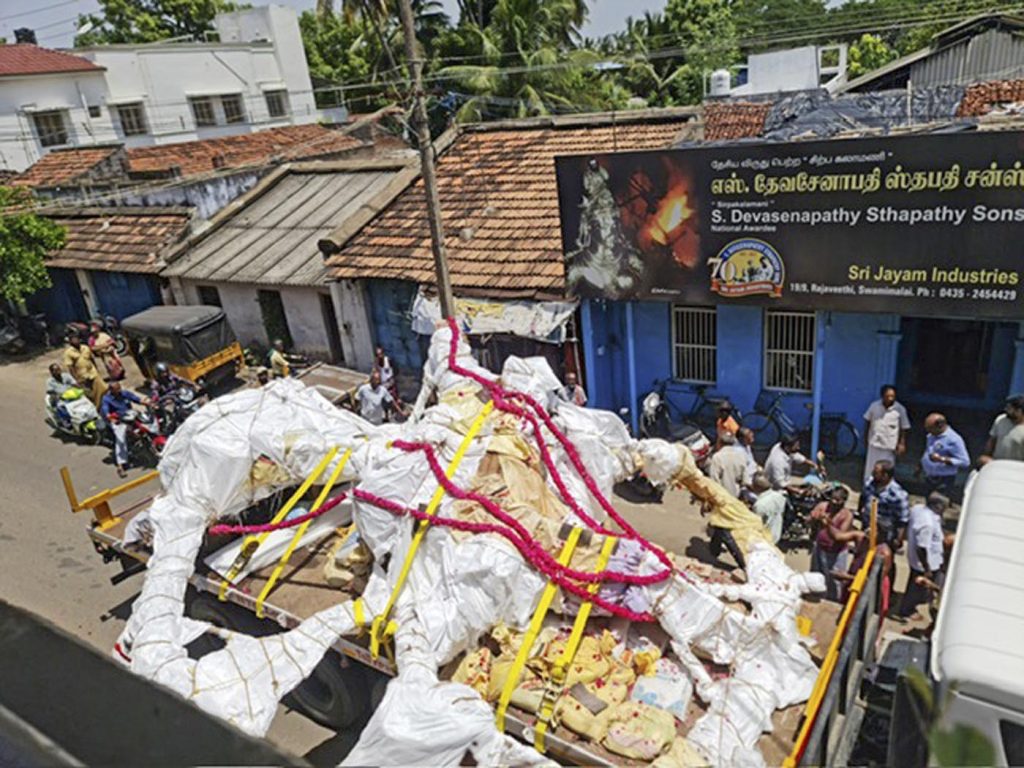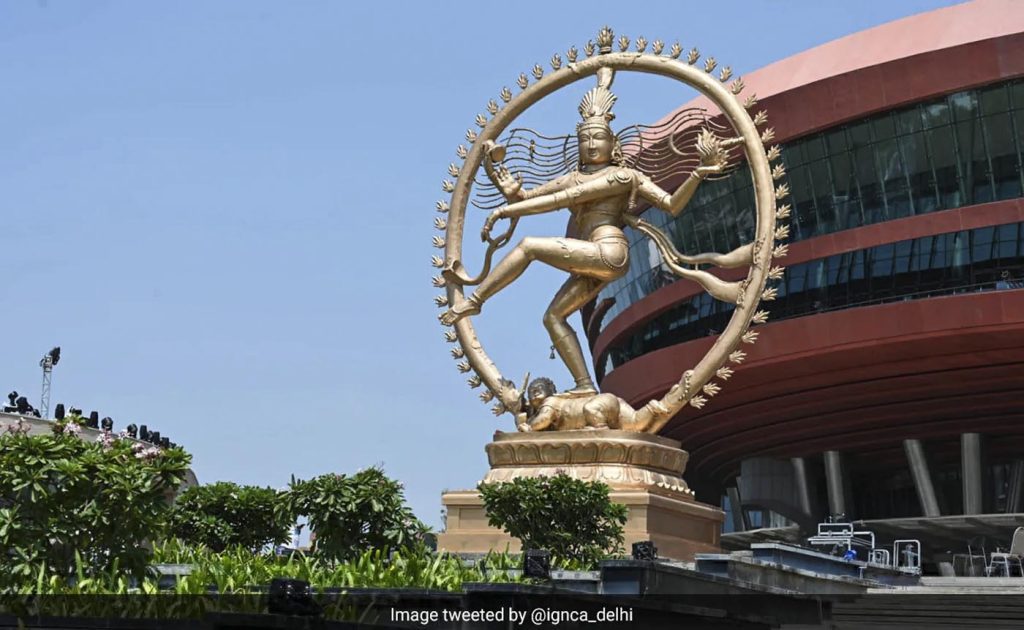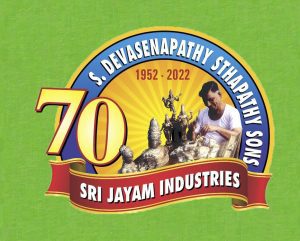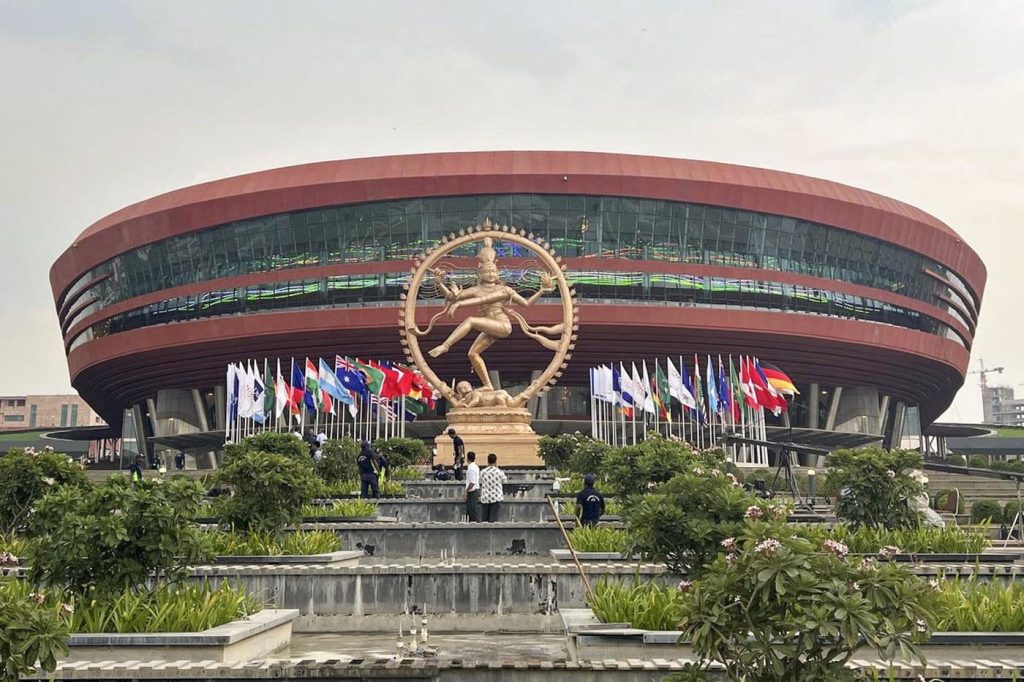World’s tallest Nataraja graces new Bharat Mandapam exhibition center
Nataraja kept inspiring us to complete 30 months’ work in just six months.” That’s how Govind Mohan of the Indian government’s Ministry of Culture described their commissioning of a 27-foot-tall sculpture of God Siva as Lord of Dance to be installed in time for the G-20 Summit of global economic leaders held September 9–10, 2023. Weighing about 18 tons, it reposes in front of the new, iconic, elliptical Bharat Mandapam exhibition and convention center where the leaders gathered. They marveled at this artistic depiction of India’s “essence of unity, strength and grace.”
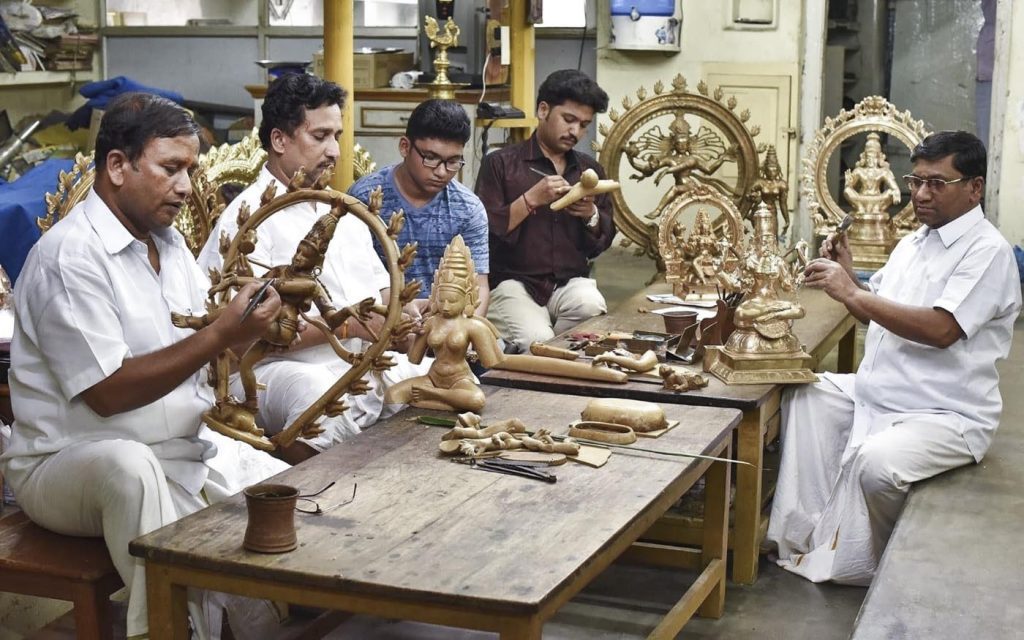
The single-cast, solid statue, costing about us$1.2 million according to The Hindu, is made of an amalgam of eight metals: copper, brass, lead, gold, silver, mercury, iron and tin. Summit organizers wanted to fashion Nataraja in the traditional way, so the art world pointed them to Radhakrishnan, Srikantan and Swaminathan, the three sons of the late master craftsman S. Devasenapathy Sthapati of Swamimalai, Tamil Nadu. Their company, Jayam Industries, uses the Chola lost-wax method. 1) They first create a wax model of the statue. 2) Wax rods, known as sprues, are attached to the model, which will serve as pouring channels for the molten metal. 3) Uniquely soft alluvial clay soil from the nearby Cauveri River is built up around the wax model in at least three layers. 4) The clay-coated model is then placed in a kiln. As the temperature increases, the wax melts and drains away, leaving a hollow clay mold (hence the name “lost wax.”). 5) Molten metal is poured into the clay mold through the channels formed by the removed sprues. 6) After cooling, the clay is chipped away, and the statue is fine-tuned to perfection.
“The G20 Nataraja will last centuries. In fact, it can easily last 1,000 years,” Srikantan told the Times of India. “The sculptors in our family are known for the purity of the materials they use. We have never used second-grade stuff like gunmetal. We follow all the exact measurements and patterns as mentioned in the Shilpa Shastras. And we make idols for Hindu temples around the world.”
